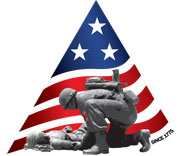Camp Stewart
 In December 1940, the balance of the 70th was on station. The 70th was to form the nucleus of the newly activated 38th Artillery Brigade. National Guardsmen from Pennsylvania, New York, Georgia, Alabama, and South Carolina, following their induction into federal service came to Camp Stewart for training so that by February 1941, approximately 14,000 soldiers were located at Stewart where only pine woods and swamps had been found a few months before.
In December 1940, the balance of the 70th was on station. The 70th was to form the nucleus of the newly activated 38th Artillery Brigade. National Guardsmen from Pennsylvania, New York, Georgia, Alabama, and South Carolina, following their induction into federal service came to Camp Stewart for training so that by February 1941, approximately 14,000 soldiers were located at Stewart where only pine woods and swamps had been found a few months before.
Training facilities and equipment were both extremely limited in these first days. Although the Camp proper had been finished, the land necessary for firing the three-inch and 37 millimeter guns, with which these first units were equipped, was still in the process of being acquired. Not even the small arms ranges had been constructed.
While waiting for the land acquisitions to build the needed ranges, planes from the 105th observation Squadron from Columbia, South Carolina, were being prepared to fly a limited number of day and night towing and tracking missions for the training of the locator and searchlight sections. Construction had also begun on miniature anti-aircraft gun and automatic weapons ranges near the camp and steps were taken to build ant-tank ranges.
The main emphasis in the camp’s training program was reserved for basic training. The Guard units at Camp Stewart had to be brought up to TOE strength by the addition of large numbers of draftees from induction centers functioning to build up the size of our Armed Forces. Training progressed rapidly despite handicaps. however, and by late summer the AA Battalion was gradually molded into shape.
After World War II, Camp Stewart was used as a separation center for redeployed troops and was inactivated 30 September 1945. It was reduced to caretaker status, with two officers, ten enlisted men and about fifty civilians.
